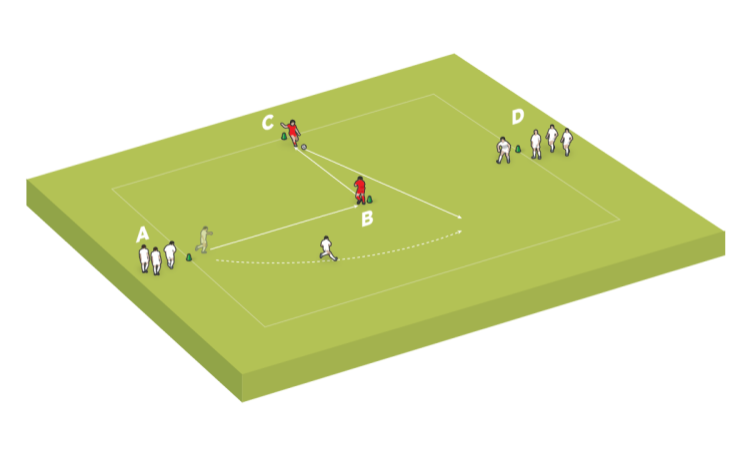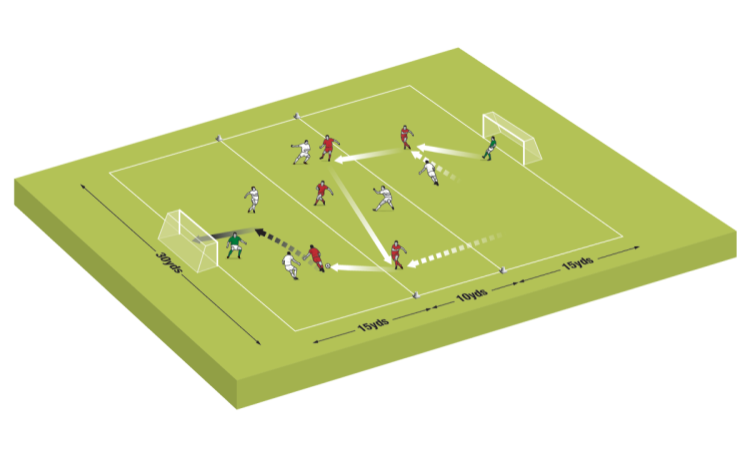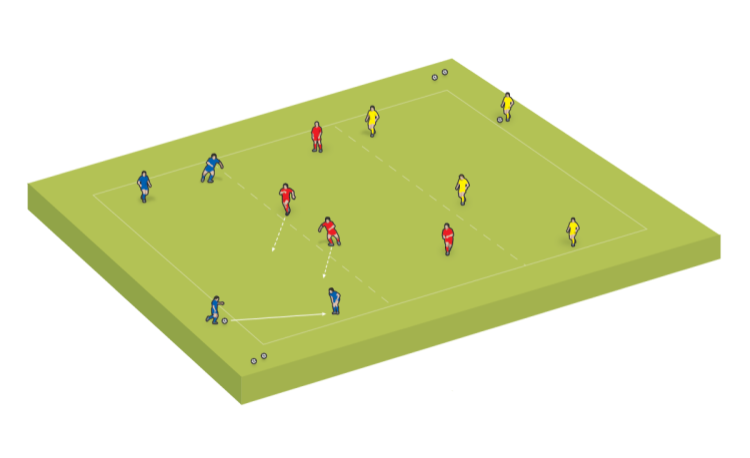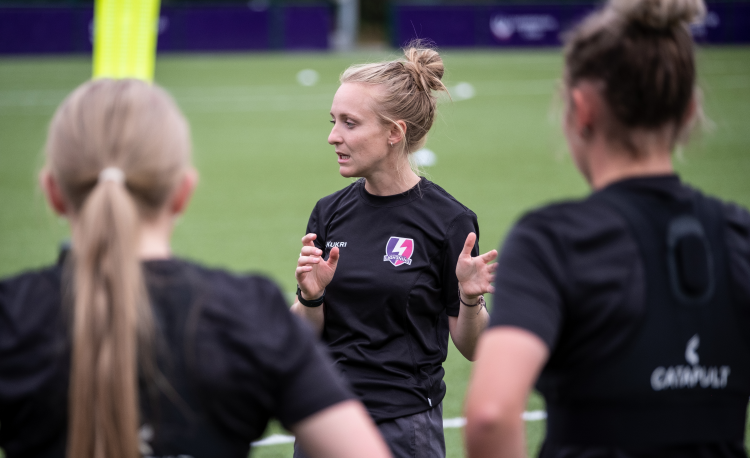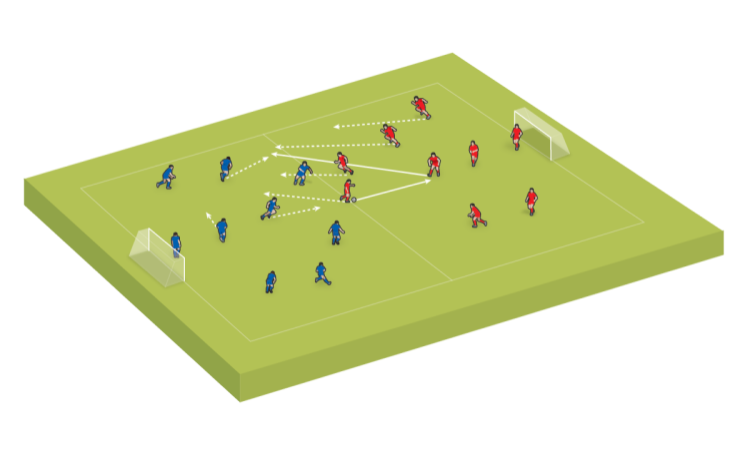How to coach passing
Want to zip the ball around the field? It’s all about technique, accuracy, weight, vision, timing, movement and communication
Passing is, of course, an integral part of our great game.
With more teams than ever choosing to play out from the back, it has never been more important for players, regardless of position, to master the art of passing.
Here are some key coaching considerations when teaching your players about passing.
Technique
Correct technique produces both accuracy and consistency in passing.
Techniques will vary between the types of passes. A short pass, for example, is best played with the inside of the foot, while a driven long pass is best done with the laces.
Questions to ask your players:
- What part of the foot should you use?
- Where should your standing foot be?
Accuracy
The more accurate a pass is, the more effective it is.
Players should be able to aim their passes at a target, whether it be to a teammate, or the space behind an opposing player.
Questions to ask your players:
- In which direction do you want the ball to go?
- What way should your body be facing?
Weight
The weight of a pass is how hard or soft the ball is struck – it determines how far a ball will go and the speed it will travel at.
Different weights are required in different scenarios.
Question to ask your players:
- How could you make that pass go faster?
Vision
Players need to know what options are available to them to make a decision on where, when and how to pass.
This requires communicating with team-mates, other players moving for the ball and regular scanning of the pitch to check what is going on.
Question to ask your players:
• What can you see around you?
• Where are your teammates? Where are your opponents? Where is the space?
Timing
If players have good vision of what is going on on the pitch, they can then make considerably better decisions about when to play the ball.
Understanding the timing of a pass may be the difference between a team-mate being able to connect with it, or beating the offside trap, for example.
Question to ask your players:
- Is now the right time to play the ball?
- Can you hold onto the ball until it’s the right time to play it?
Movement and options
A successful pass is one that reaches its intended recipient.
Potential recipients must also work to give the player on the ball options by moving into space and drawing defenders out. The player on the ball should have as many options as possible.
Question to ask your players:
- Can you move and move again to make yourself available?
- What options are we giving the player on the ball?
Receiving to play
A good first touch, or good touches when in possession, can set a pass up in the right way.
A touch out of feet, for example, can set someone up to play a longer ball, while a smaller touch will keep the ball under control in tight spaces.
Question to ask your players:
- How can you set yourself up to play the ball once you’ve received it?
Communication
A good pass is one that is as easy as possible for a team-mate to receive.
It can be about interpreting a team-mate’s run so the ball can be played in the right spot for them, but players should all be encouraged to share where they want the ball, whether on their right foot or in front of them, for example.
Question to ask your players:
- Where does your teammate like to receive the ball?
- How are you going to tell your teammates where you want the ball?
Think about how you might use some of these coaching points and questions when running passing activities.
Related Files
Newsletter Sign Up
Coaches Testimonials

Gerald Kearney, Downtown Las Vegas Soccer Club

Paul Butler, Florida, USA

Rick Shields, Springboro, USA

Tony Green, Pierrefonds Titans, Quebec, Canada
Subscribe Today
Discover the simple way to become a more effective, more successful soccer coach
In a recent survey 89% of subscribers said Soccer Coach Weekly makes them more confident, 91% said Soccer Coach Weekly makes them a more effective coach and 93% said Soccer Coach Weekly makes them more inspired.
*includes 3 coaching manuals
Get Weekly Inspiration
All the latest techniques and approaches
Soccer Coach Weekly offers proven and easy to use soccer drills, coaching sessions, practice plans, small-sided games, warm-ups, training tips and advice.
We've been at the cutting edge of soccer coaching since we launched in 2007, creating resources for the grassroots youth coach, following best practice from around the world and insights from the professional game.


